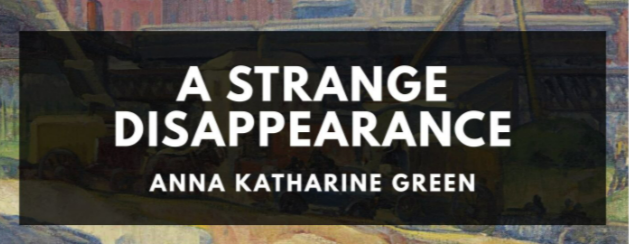CHAPTER IX — A Strange Disappearance
byCHAPTER IX – A Strange Disappearance begins in the hush of uncertainty as Mr. Gryce and the narrator examine the latest development in their pursuit of the elusive Schoenmakers. These individuals, whose defiance of the law continues to frustrate authorities, are believed to be sheltering within the dense maze of the city. As strategies for flushing them out are considered, a grim report interrupts their deliberation. News arrives of a young woman’s corpse found in the East River—an unsettling reminder of how violence moves silently in urban shadows. With urgency overtaking analysis, both men rush toward the morgue, dreading the possibility that the case they’re unraveling has just taken a darker turn. What awaits them is not just another clue, but a body bearing the signs of fear, flight, and fatal consequence.
At first glance, the lifeless form does not match the girl they seek. Her hair—a cascade of golden red—differs from the features they had been watching for. This single detail offers brief relief until memory intrudes. The narrator recalls an encounter on Broome Street—a girl cloaked in fear, whose clothing now matches that of the dead. A fabric sample from that night is produced, and its alignment with the dress on the body seals the truth. The girl in the morgue is indeed the one he had seen, and not a random victim. Her death is no accident; it speaks of hidden enemies and deliberate malice. The horror of that revelation falls heavier than expected. The case is no longer about disappearance—it is about murder.
Mr. Gryce examines the body with clinical precision, noting signs of violence that speak of a desperate struggle. The bruising, the abrasions, the unnatural positioning of her limbs—each tells a fragment of her final moments. He deduces she was not simply killed, but hunted. The conclusion leaves no space for delay. This isn’t just a tragic footnote; it’s a call to expand the investigation. Gryce’s expression hardens, not with anger but with focused resolve. Someone had silenced her, likely because she had known or seen too much. In a city that offers cover for both the powerful and the criminal, her death becomes a thread that might unravel more than one secret. His vow is quiet but unwavering—he will uncover who did this and why.
The narrator stands by, shaken but sharpened. This isn’t just a tale of tracking fugitives anymore. The implications grow more layered: there is a missing woman, a political man with secrets, a girl now dead, and a family—the Schoenmakers—whose influence reaches places unseen. As they leave the morgue, the city feels colder. Buildings loom like silent witnesses. Every passerby becomes a potential clue or threat. The lines between their original task and the realities of this new crime have begun to blur. And yet, through the unease, there is a renewed sense of purpose. They are no longer just following trails; they are pursuing justice—for someone who had no voice left to cry for help.
By shifting from speculation to evidence, this chapter expands the emotional weight of the narrative. It reminds the reader that disappearance stories are never just about absence. Often, they are preludes to confrontation—with grief, with guilt, or with truths society prefers to leave buried. The death of the girl, whose identity is confirmed too late, adds a layer of urgency to the plot. Her presence was once peripheral, but now she becomes central—not just as a victim, but as a symbol of overlooked danger. This moment also reflects real-world patterns in criminal investigations, where the loss of an individual often points to networks and patterns that are broader than initially perceived.
In closing, the narrator’s final reflection offers no peace, only clarity. This dead girl was not the missing wife from Mr. Blake’s household. And yet, she was undeniably linked to the same circle of secrecy and fear. Her end marks the beginning of something larger—an investigation that will now reach deeper into the undercurrents of the city, where money, power, and anonymity often collide. What was once a strange disappearance has evolved into a puzzle layered with violence, deceit, and lingering questions that demand answers.

